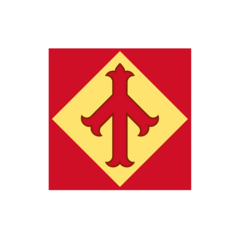User:Hifax/Sandbox: Difference between revisions
No edit summary |
No edit summary |
||
| Line 4: | Line 4: | ||
| native_name_lang = {{wp|Greek language|Piraean}} | | native_name_lang = {{wp|Greek language|Piraean}} | ||
| logo = National Alignment Piraea.png | | logo = National Alignment Piraea.png | ||
| colorcode = # | | colorcode = #808080 | ||
| abbreviation = EP | | abbreviation = EP | ||
| leader1_title = Leader <small>(1943-1948)</small> | | leader1_title = Leader <small>(1943-1948)</small> | ||
| Line 30: | Line 30: | ||
| international = | | international = | ||
| europarl = | | europarl = | ||
| colours = {{colorbox|# | | colours = {{colorbox|#808080}} Grey | ||
| anthem = | | anthem = | ||
| flag = | | flag = | ||
| Line 36: | Line 36: | ||
| country = Piraea | | country = Piraea | ||
}} | }} | ||
'''National Alignment''' ({{wp|Greek language|Piraean}}: ''Εθνική Παράταξη'') was the {{wp|sole legal party}} of the [[Second Piraean Republic]], dominated by the General [[Konstantinos Athanopoulos]] during most of its existence. | |||
Founded during the last years of the [[First Piraean Republic]], National Alignment became a prominent political party that opposed to the {{wp|anarchist}} and {{wp|left-leaning}} principles that aroused in Piraea. Under the leadership of [[Kyriakos Kanopoulos]], the party staged the {{wp|civic-military coup}} against the government of [[Aristeidis Kontolis]], igniting a short civil conflict that concluded with the proclamation of the Second Piraean Republic under the direct rule of Athanopoulos and National Alignment. As the sole legal party, National Alignment counted with the political and social hegemony over the rest of actors in the political system of the Second Republic; however, the party never became a source of power, and instead, is seen by scholars as a subservient umbrella organization that supported Athanopoulos' figure. | |||
The party counted with several figures of the {{wp|military}} as members, although it also saw figures linked with the business world and the [[Episemialist Church]], with which the party and regime counted with an extensive relation. In the thought of Athanopoulos and the structure and theory of National Alignment, there were many similarities with the [[Kingdom of Amathia]], the [[Greater Solarian Republic]] and the [[Functionalist Gaullica]]. With the failure of the military junta during the [[1979 Piraean national plebiscite|1979 plebiscite]] and the subsequent aperture of the junta, National Alignment dissolved itself, with a large number of members forming the {{wp|centre-right}} [[People's Party (Piraea)|People's Party]]; {{wp|post-francoist|post-Functionalist}} and more radical wings founded [[New Force (Piraea)|New Force-National Alliance]] and the [[National Party (Piraea)|National Party]], which contested the [[1980 Piraean general election|1980 general election]]. | |||
Revision as of 02:38, 27 January 2023
National Alignment Εθνική Παράταξη | |
|---|---|
 | |
| Abbreviation | EP |
| Leader (1943-1948) | Kyriakos Kanopoulos |
| Leader (1948-1978) | Konstantinos Athanopoulos |
| Leader (1978-1979) | Ioannis Christodoulopoulos |
| Split from | People's Party New Force-National Alliance National Party |
| Headquarters | Alikianos |
| Newspaper | ΑΒΓ |
| Youth wing | Legion Λεγεώνα |
| Ideology | National Functonalism Piraean irredentism Corporativism Political Catholicism Sotirian Democracy Social conservatism |
| Political position | Right-wing to far-right |
| Religion | Episemialist Church |
| Colours | Grey |
National Alignment (Piraean: Εθνική Παράταξη) was the sole legal party of the Second Piraean Republic, dominated by the General Konstantinos Athanopoulos during most of its existence.
Founded during the last years of the First Piraean Republic, National Alignment became a prominent political party that opposed to the anarchist and left-leaning principles that aroused in Piraea. Under the leadership of Kyriakos Kanopoulos, the party staged the civic-military coup against the government of Aristeidis Kontolis, igniting a short civil conflict that concluded with the proclamation of the Second Piraean Republic under the direct rule of Athanopoulos and National Alignment. As the sole legal party, National Alignment counted with the political and social hegemony over the rest of actors in the political system of the Second Republic; however, the party never became a source of power, and instead, is seen by scholars as a subservient umbrella organization that supported Athanopoulos' figure.
The party counted with several figures of the military as members, although it also saw figures linked with the business world and the Episemialist Church, with which the party and regime counted with an extensive relation. In the thought of Athanopoulos and the structure and theory of National Alignment, there were many similarities with the Kingdom of Amathia, the Greater Solarian Republic and the Functionalist Gaullica. With the failure of the military junta during the 1979 plebiscite and the subsequent aperture of the junta, National Alignment dissolved itself, with a large number of members forming the centre-right People's Party; post-Functionalist and more radical wings founded New Force-National Alliance and the National Party, which contested the 1980 general election.